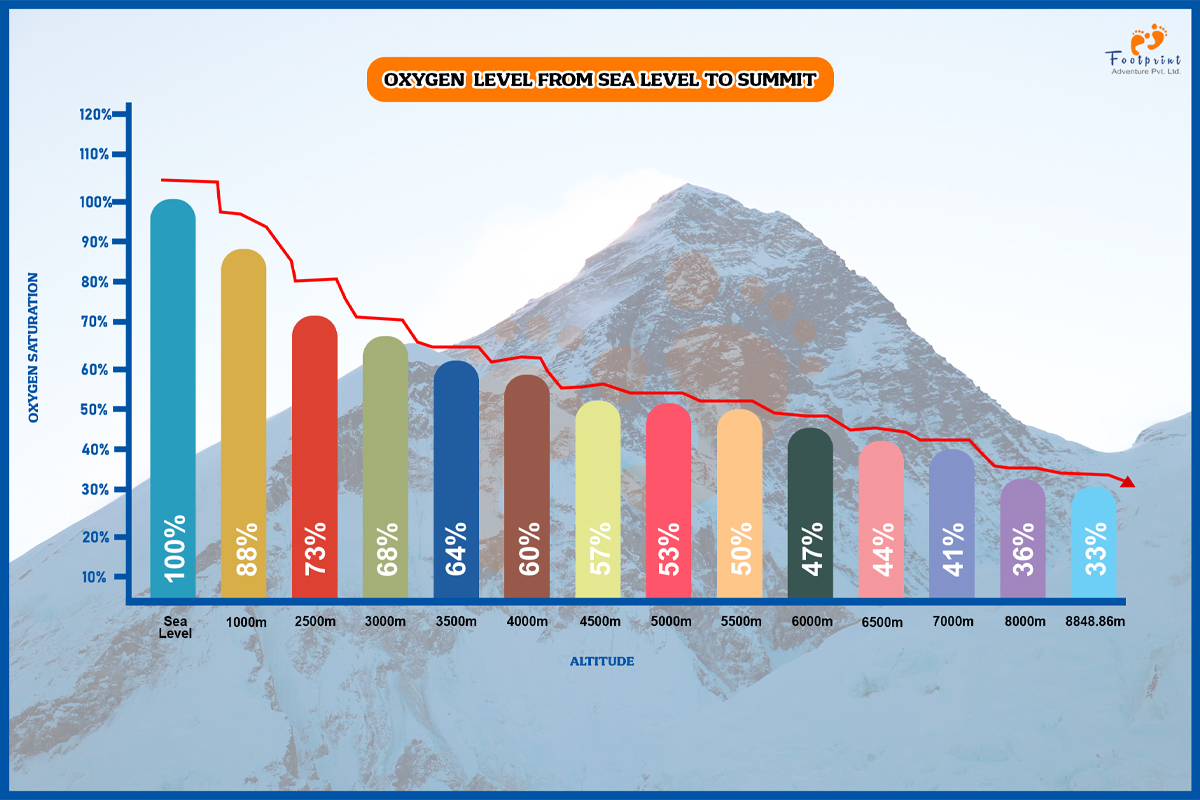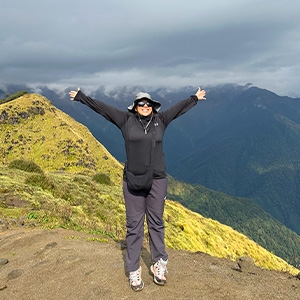Acute Mountain Sickness Definition
Acute Mountain Sickness definition defines as the mildest form of High Altitude Mountain Sickness, which is a serious effect of high altitude produced by quick exposure to low levels of oxygen at high elevation. Different people can react differently to being at a high altitude. When you are exposed to a higher altitude for an extended period of time, your body experiences a number of symptoms that are referred to as "Altitude Sickness." Altitude Sickness in Nepal is a common illness when people are traveling to a higher elevation level and are either climbing or being transferred there quickly. The air density and oxygen levels decrease as you ascend higher. The bodies can adapt to the change, but it will take some time.
Headaches, Nausea, Fatigue, Confusion, Difficulty Sleeping, and Dizziness are a few common Symptoms of Acute Mountain Sickness. Acute Mountain Sickness can worsen into High-Altitude Cerebral Edema (HACE) with accompanying disorientation or High-Altitude Pulmonary Edema (HAPE) with accompanying shortness of breath. Altitude Sickness may develop after prolonged exposure at high altitudes. Most cases of Altitude Sickness in Nepal occur above 2,500 meters (8,000 feet), while some people experience symptoms at lower altitudes. A history of Altitude Sickness, intense physical activity, and an abrupt elevation change are risk factors. The diagnosis is supported by those who have more than a slight reduction in activity and is based on symptoms.
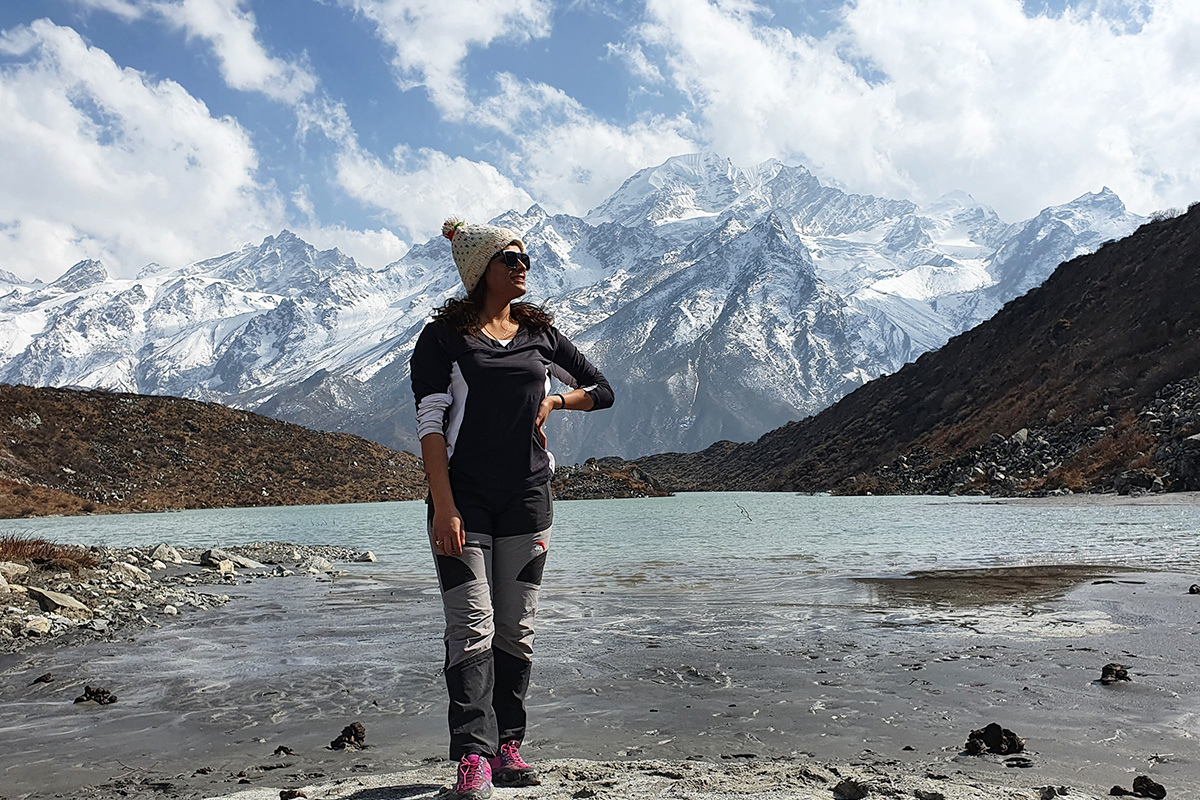
At High Altitudes, it is advised to presume that any headache, nausea, shortness of breath, or vomiting are signs of altitude sickness. Some people are able to go too far to greater elevations without experiencing any negative health effects. It is far more likely that you may have Symptoms of Acute Mountain Sickness if you ascend to a greater altitude in a shorter amount of time. The majority of people only experience symptoms such as headaches, fatigue, stomach upset, and difficulty sleeping. Most climbers adhere to the "Climb High and Sleep Low" principle. The goal is to progressively expose the body to greater and higher altitudes, give it time to acclimate, and then descend to an altitude the body is accustomed to for sleep. In order to aid in the body's adjustment to higher elevations, Adventure-Pulse treks include acclimatization days that involve brief excursions to a higher altitude.
Most trekkers will experience Acute Mountain Sickness in Nepal, so being aware of the essentials will help ensure the team's safety and that you can enjoy your time in the mountains. With careful preparation and acclimation, it can be avoided. Any trip should be carefully planned, and you should be aware of the closest hospitals and emergency numbers. Whereas, some people have a potentially life-threatening enlargement of their brain, while others develop fluid buildup in their lungs. Going to a lower elevation is the only effective treatment for altitude sickness. Taking things slow while ascending to a higher altitude will help you avoid getting sick from the altitude. There are also several best practices for avoiding AMS
What causes Acute Mountain Sickness?
The force exerted on your body by the weight of the air all around you is referred to as barometric or atmospheric pressure. This pressure diminishes, and there is less oxygen that is readily available as you ascend to more elevated locations. You will eventually adjust to the higher air pressure if you make your home in an area that is situated at a reasonably high altitude. However, if you visit a location that is located at a higher altitude than you are accustomed to, it will take some time for your body to acclimatize to the difference in pressure. You put yourself at risk of altitude sickness whenever you go to an elevation that is higher than 8,000 feet. This is the major reason to cause Acute Mountain Sickness.
Who is at Risk of Altitude Sickness?
You are more likely to have Symptoms of Altitude Sickness if any of the following applies to you:
- You visit a high height while residing at or close to sea level.
- You use drugs, such as tranquilizers, narcotic painkillers, or sleeping pills. that can slow down your respiration.
- Dehydration at higher altitudes may contribute to altitude sickness symptoms.
- You haven't adjusted to the altitude properly.
- Acclimatization has been messed up by alcohol or other drugs.
- You've experienced it in the past.
- You put too much pressure on yourself (overexert)
A risk factor for altitude sickness is NOT a medical condition like asthma, COPD, or heart disease. On the other hand, low oxygen levels at a high altitude might be problematic for people who already have major medical conditions.
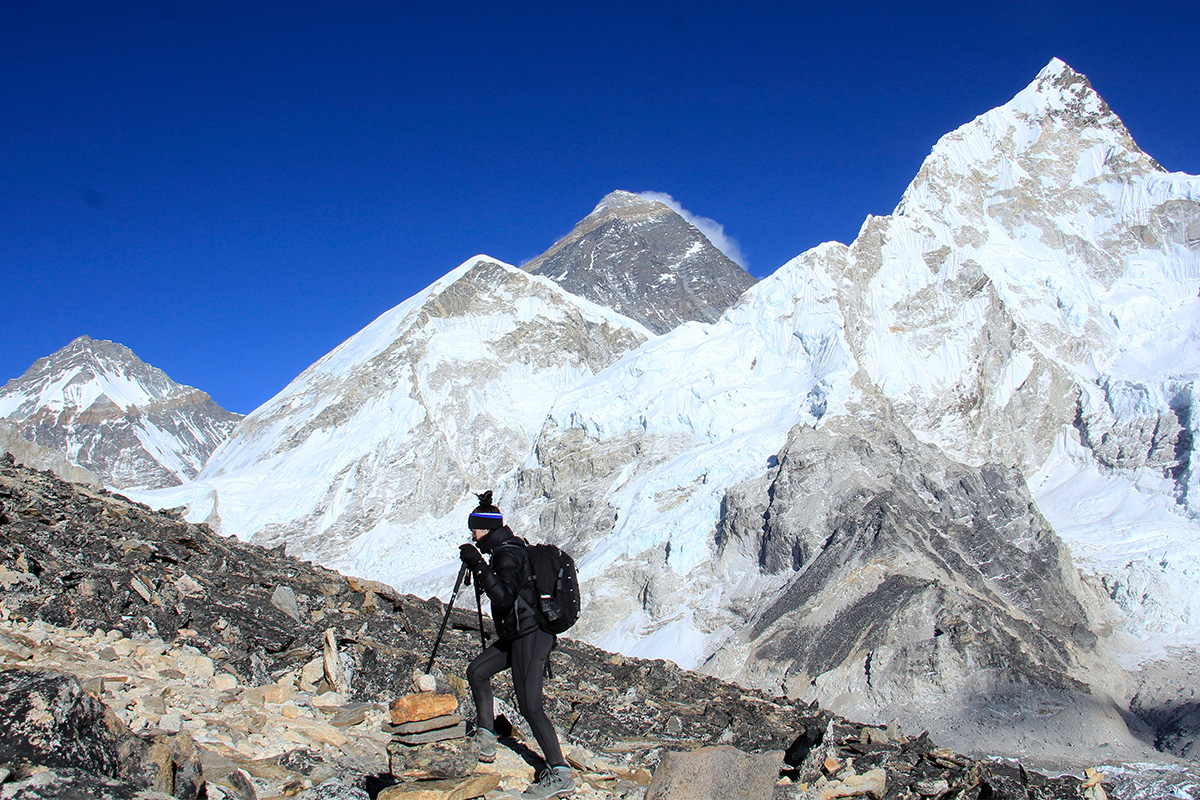
What are the First Symptoms of Acute Mountain Sickness?
Within a few hours of ascending to a greater altitude, these symptoms may appear. The Symptoms of Altitude Sickness and their severity may also be influenced by dehydration since greater altitudes result in a higher rate of water vapor loss from the lungs. The following are a few Symptoms of Acute Mountain Sickness:
- Dizziness
- Sleeplessness, muscle aches, and headaches
- Irritability, vomiting, and nausea
- Reduced appetite
- Rapid heartbeat and swelling of the arms, feet, and face
- Breathlessness after physical activity
How can I Treat Mild Acute Mountain Sickness?
You can treat Acute Mountain Sickness (AMS) with the following remedies that consist of:
- Hydration through water
- Reduced Physical Activity
- Resting for at least a day before ascending to a higher altitude
- Though acclimation is by far the greatest way to prevent AMS, medications like Diamox are useful for easing the symptoms.
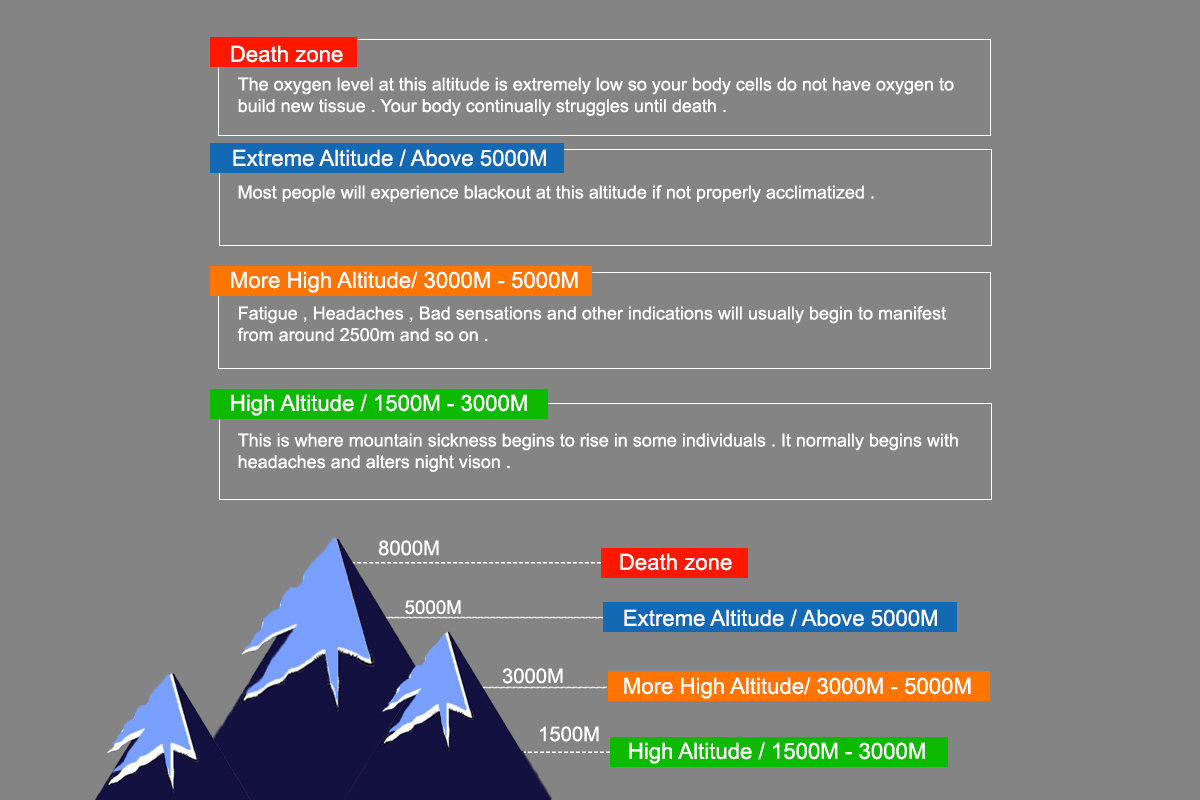
Acclimatization is the process by which a person adapts to a change in attitude and stays at the same level of performance in different environments. The fundamental guidelines for acclimatization are:
- Avoid gaining altitude too quickly and keep your speed slow, when trekking at high altitudes.
- Do not exhaust yourself for the first 24 hours at a high altitude.
- Take one day of rest or acclimatization for every 900 feet of elevation gain.
- "Sleep Low and Climb High." As long as you descend to a lower altitude and spend the night there, it is possible to climb more than 1,000 feet (305 meters) per day.
- Maintain proper hydration. It would help if you consumed a lot of fluids to stay hydrated because acclimatization is frequently accompanied by fluid loss (at least 3-4 liters per day). There should be plenty of clean urine produced.
- If you are experiencing some of the AMS symptoms, avoid ascending.
The group must ensure that everyone is sufficiently acclimated to the altitude before ascending higher, keeping in mind that different people will acclimate at various rates. Acclimatization is the best way to help Acute Mountain Sickness.
Acute Mountain Sickness Medications
AMS may be treated with a variety of drugs, depending on a doctor's prescription and advice. The acute mountain sickness medications are:
- Diamox (Acetazolamide) for standard medical treatment for high altitude illness prevention.
- Paracetamol and Ibuprofen for headaches
- Promethazine or other anti-sickness medications for nausea
- Disprin is used to treat headaches and,
- Dexamethasone, in only the most severe situations
Diamox for Acute Mountain Sickness
The use of Diamox, also known as Acetazolamide, is a well-known medication that has become increasingly familiar in recent years. The medicine offers alpine travelers a useful means by showing the potential in easing the signs and lowering the danger of AMS. Diamox can be a valuable addition to a thorough preventive approach, assisting in the acclimatization process even if it is not a treatment for AMS. You can choose whether to add Diamox to your high-altitude adventure kitbag with more knowledge of the medicine and its benefits.
How long does Acute Mountain Sickness Last?
Most people who have even a mild case of acute mountain sickness can feel better quickly after going down to a lower altitude. In most cases, symptoms improve after a few hours, although they can remain for as long as 48 hours. Complications, on the other hand, can cause the brain and lungs to swell, which can lead to a coma or even death if your illness is severe and you don't have access to many treatments. Preparing for a trip to a high-altitude destination is a must.
Is Acute Mountain Sickness Fatal?
Generally, Acute Mountain Sickness is not fatal. However, in rare cases, it can progress to more severe conditions if left untreated. AMS can lead to life-threatening conditions such as HACE, or HAPE, which require immediate medical attention.
- High Altitude Cerebral Edema (HACE): involves swelling of the brain due to fluid accumulation causing excess brain swelling.
- High Altitude Pulmonary Edema (HAPE): involves fluid accumulation in the lungs causing shortness of breath even when resting.
In rare cases, AMS can lead to severe neurological or respiratory problems and can be fatal if not treated properly.
No specific Blood Tests are required for Acute Mountain Sickness since the symptoms are treated through oxygen and medications. However, in serious cases, Chest and Brain X-rays are required to determine any brain swelling or fluid accumulation in the lungs.
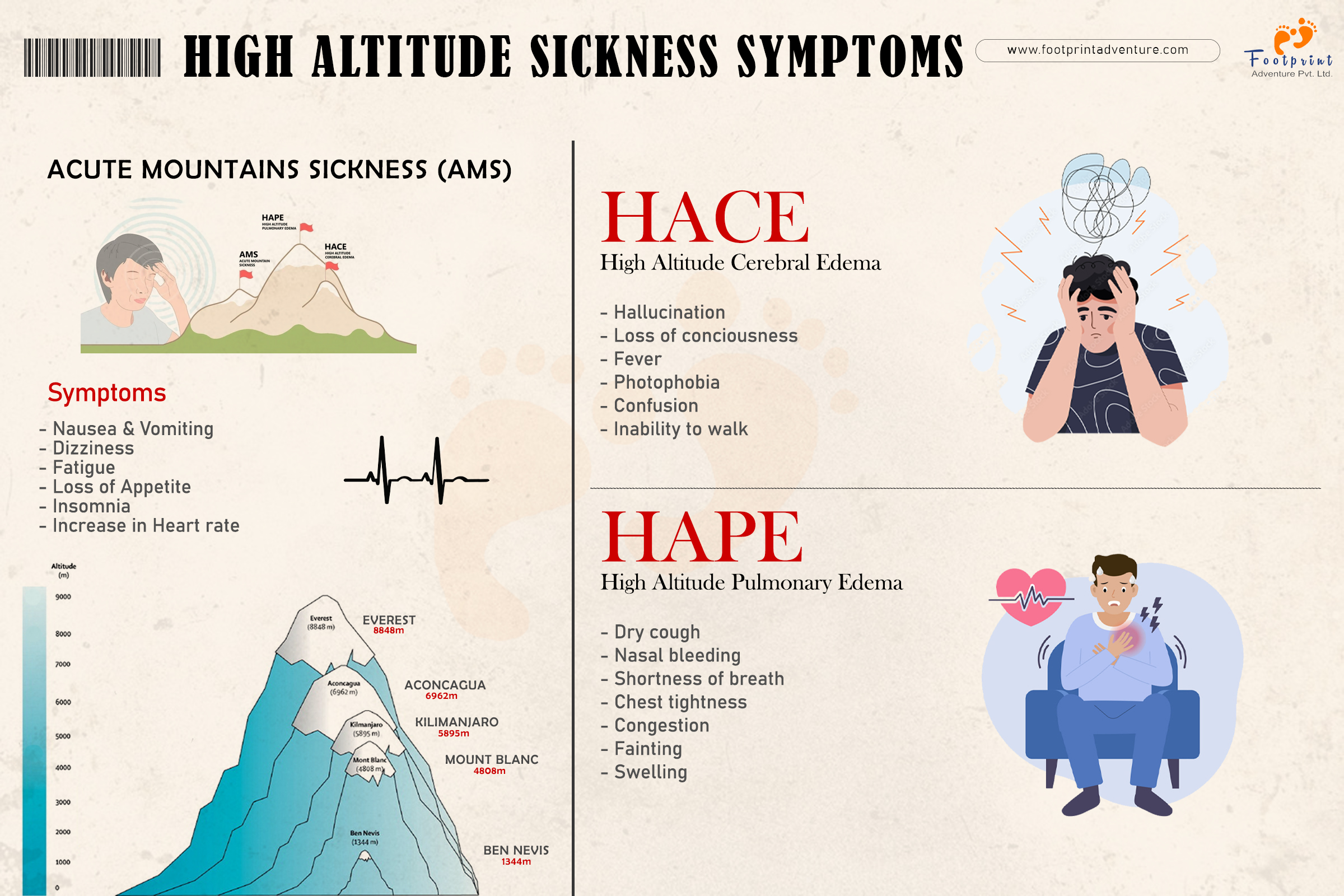
Best Practices For Avoiding AMS
As one climbs, the air becomes less dense, reducing the amount of oxygen that is taken in by the lungs with each breath. Because the body does not have enough time to adapt to the decreased oxygen level, AMS develops. Mild AMS is a typical occurrence, and the Symptoms are typically easy to recognize. Here are some steps you can take to prevent altitude sickness:
Enough Hydration to your body
Simply put, you should always try to drink at least five liters of water every day, no matter what. This is less of a challenge when the temperature is higher and you are perspiring more, but it becomes more difficult when the temperature drops and you are not perspiring as much. It's possible that after a few liters, you'll feel adequately hydrated, but the truth is that your body is still working harder with less oxygen and still needs water. Consume a minimum of five liters of water every single day with no exceptions.
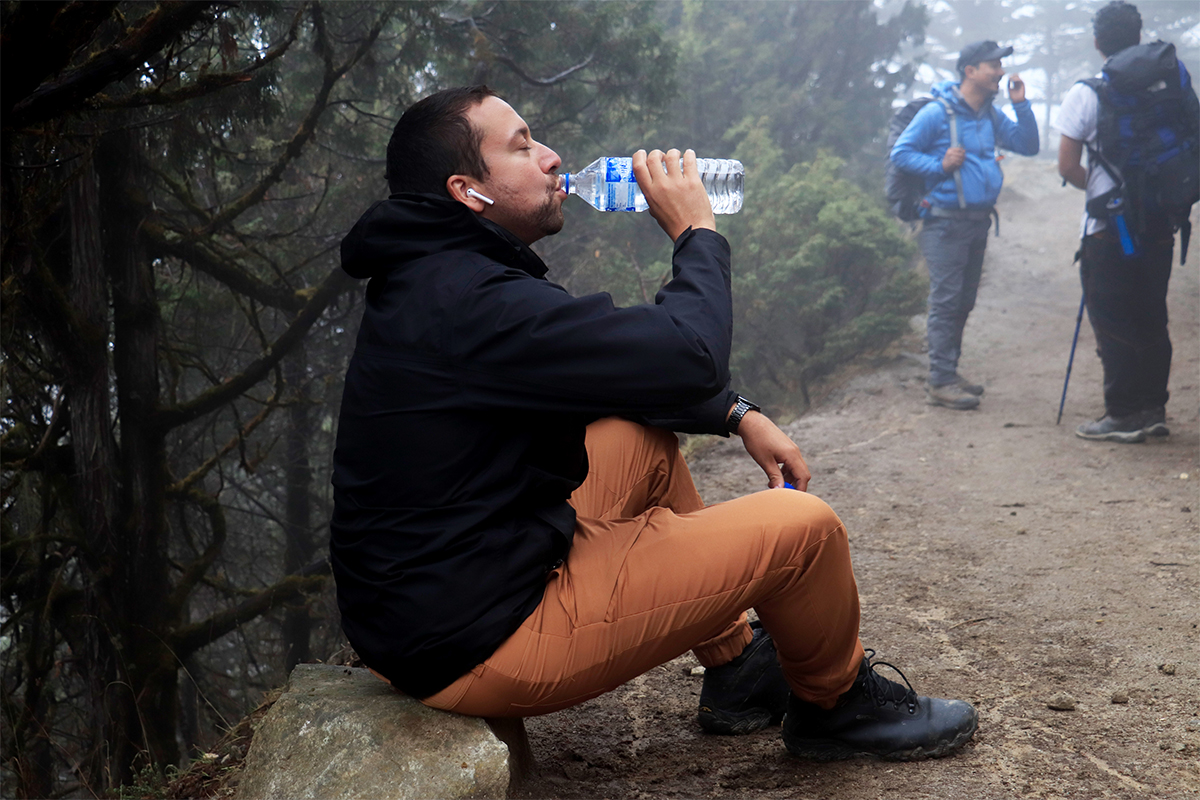
In order to avoid getting altitude sickness, it is essential to maintain a healthy level of hydration. Take frequent sips of water while you are climbing. Drinking more water is one of the best things you can do to help your body adapt to living at a high altitude. In high-altitude regions with low humidity, which keeps the air dry, you must drink twice the amount of water as you typically would in order to maintain proper hydration levels.
Consume Raw Garlic and Cloves
Raw Garlic and Cloves are two of the Best Natural Remedies for Acute Mountain Sickness. Garlic aids in thinning the blood vessels and improves regular blood flow throughout the body and also aids in nausea and dizziness. Cloves also work similarly to improve the utilization of oxygen in the body.
Raw garlic and cloves are often consumed in the delicacies when traveling at higher altitudes to mitigate the Effects of High Altitude Sickness.
Avoid caffeinated and alcoholic beverages
If you can, you should stay away from coffee, tea, and other drinks with caffeine the day before a trip. Also, stay well clear of alcohol in the hours leading up to your trip. And make an effort to stay away from them while ascending.
Alcohol and caffeinated drinks are things that affect our ability to adjust to the increased altitude. "The majority of people travel for fun," but alcohol and caffeinated drinks are things that affect our ability to adjust. Furthermore, these beverages do not help you stay hydrated, which is yet another reason to stay clear of them.
Climb slowly & steady
Your body will need approximately two to three days of gradually increasing the dose to adapt to the changes. Try to avoid traveling directly to high altitudes by flying or driving. Instead, make steady progress up the mountain each day, pausing only to rest before carrying on the following day. If you have no choice but to travel by car or plane, choose a lower altitude and remain there for a full day before ascending further.
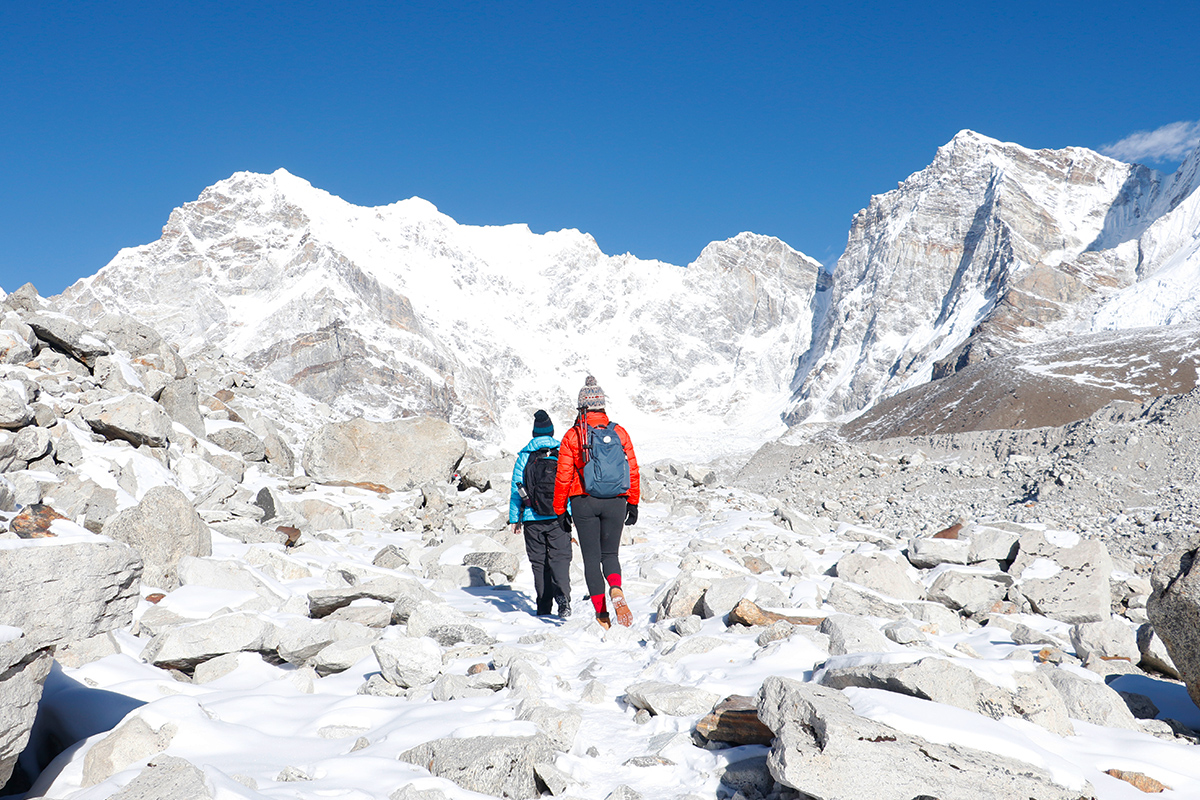
When walking, schedule rest stops along the way that is at lower altitudes than your final destination. Every day, you should strive to ascend no more than 1,000 feet, and you should schedule a day off for every 3,000 feet above that you go.
Eat enough carbohydrates and a balanced diet while trekking
We don't get the recommendation to consume additional carbohydrates very frequently. But you will need more calories when you are at a higher altitude. Therefore, remember to pack a lot of nutritious snacks, including a lot of whole grains.
Eat a diet that is higher in carbohydrates. Because carbohydrates require less oxygen for digestion than fats do, they can help reduce the symptoms of acute mountain sickness.
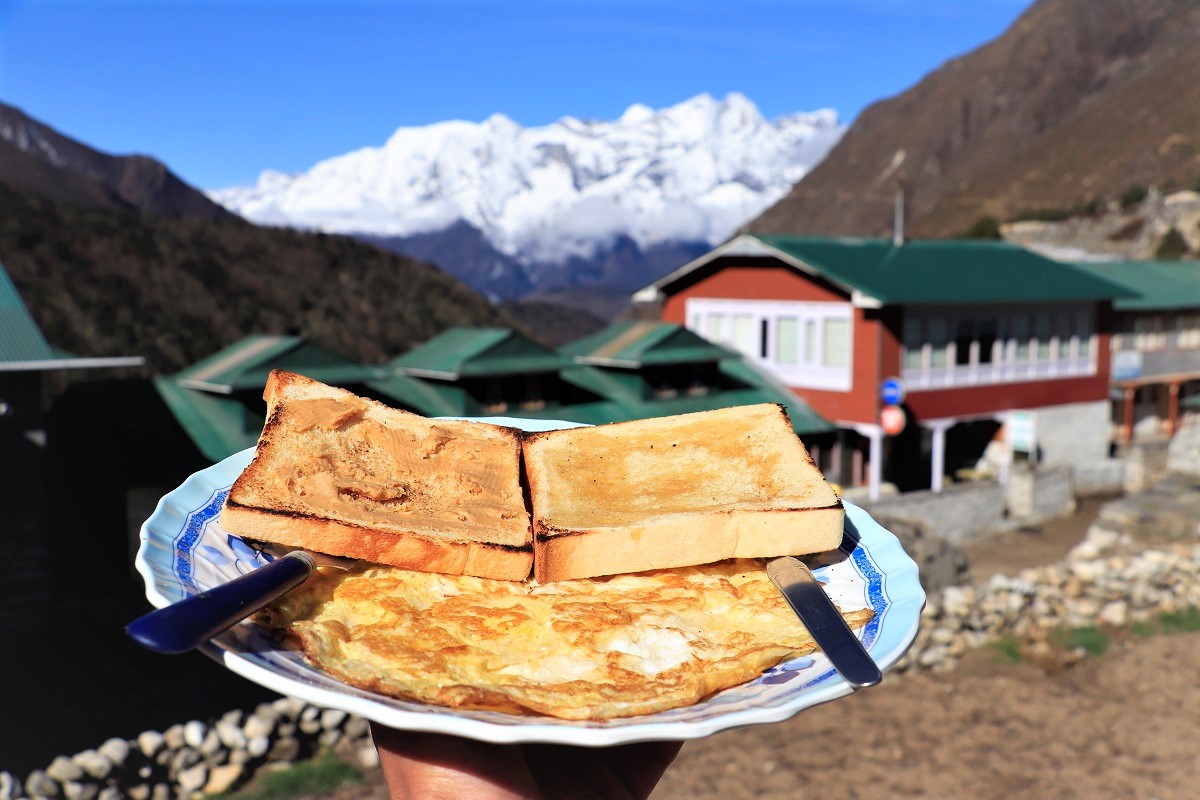
Enough Acclimatization & Rest
You will acclimate better if you introduce yourself to higher altitudes and then return to a lower level to sleep. After establishing camp, climb a neighboring hill to take in the view and then descend to get a better night's sleep. Utilize your leisure days to hike up to higher heights and back down; even a few hundred vertical feet are worthwhile. This rule becomes much more crucial at higher altitudes, roughly 10,000 feet and above because your body is adapting to a lot less oxygen.
Most of the time, the symptoms of altitude sickness are worse at night because you are sleeping. If you intend to climb more than 1,000 feet in a single day, it is a good idea to climb at a higher altitude during the day and then return to a lower altitude to sleep. This is especially true if you plan to climb during the day.
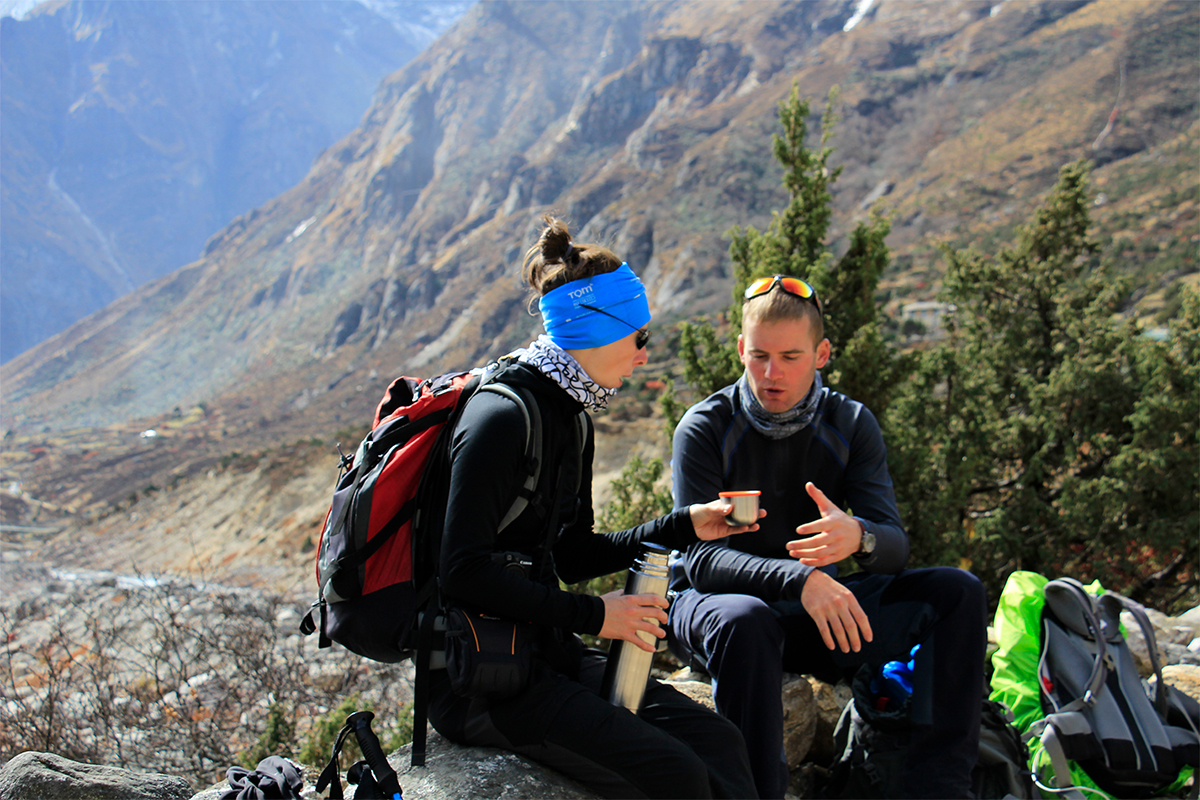
Medication
Usually, Acute Mountain Sickness Medications aren't given ahead of time unless they are absolutely necessary, like when flying or driving to a high altitude. There is some evidence that taking acetazolamide, which used to be sold under the brand name Diamox, two days before a trip and while on the trip can help prevent altitude sickness.
Acetazolamide is a drug that is usually given to people who have glaucoma and are being treated for it. But because of how it works, it can also help people avoid getting sick from being at a high altitude. To get it, you will need a written prescription from your primary care doctor.
It is also important to know that you can get altitude sickness symptoms even if you are taking acetazolamide. The medication will not alleviate your symptoms once they have already begun to appear. The only treatment that will be effective is descending to a lower elevation as quickly as possible.
Proper oxygen enrichment
Oxygen enrichment can reduce altitude sickness and hypoxia-related symptoms. In climate-controlled spaces, supplementary oxygen reduces altitude. At 3,400 m (11,200 ft) (67 kPa or 0.66 atm), increasing the oxygen concentration by 5% with an oxygen concentrator and an existing ventilation system gives an approximate altitude of 3,000 m (10,000 ft) (70 kPa or 0.69 atm), which is easier for people who are used to high altitudes to handle.
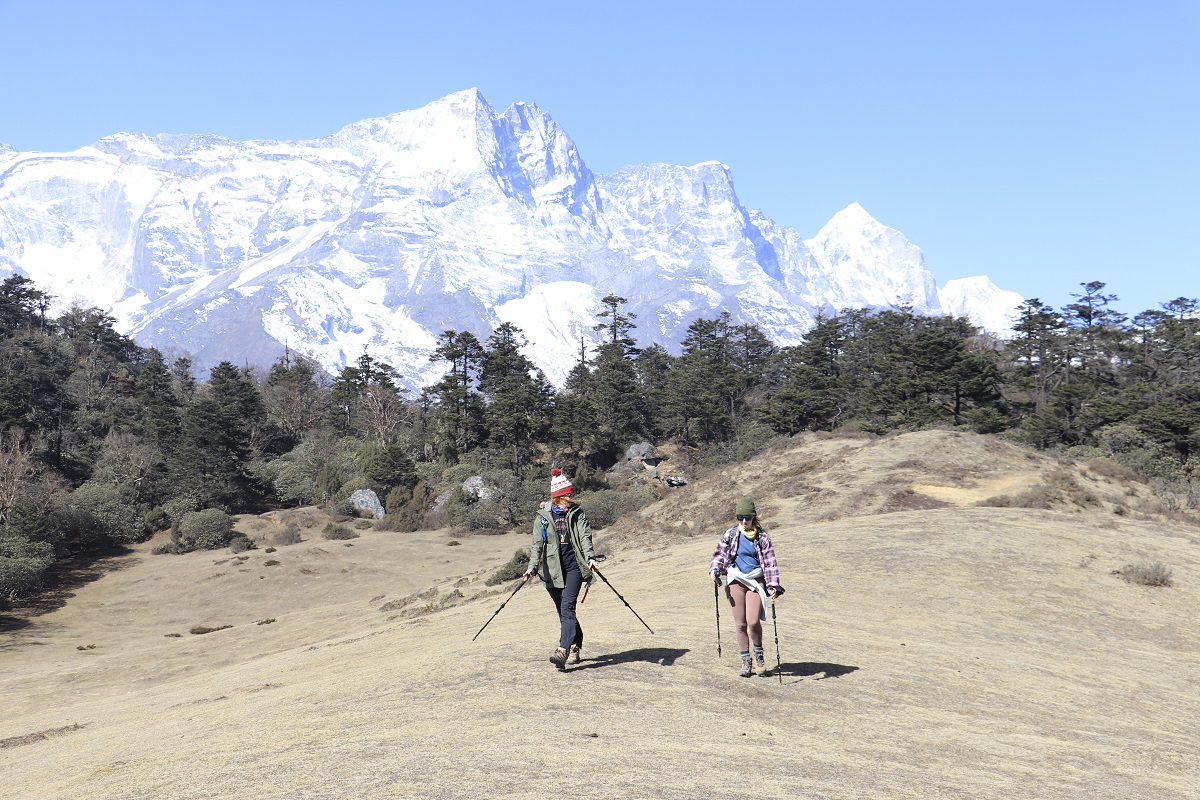
Gas or liquid oxygen can be applied by nasal cannula or mask. Using electricity, oxygen concentrators based on PSA, VSA, or VPSA can create oxygen. Stationary oxygen concentrators use PSA technology, which degrades at high elevations. Use a higher-flow concentrator to offset performance loss. Portable oxygen concentrators can run on vehicle DC power or internal batteries, and at least one commercial system compensates for altitudes of up to 4,000 m. (13,000 ft).
Be Aware of Your Strength and Body
By following the recommendations, you'll boost your chances of remaining healthy on your trek, but everyone reacts differently to altitude. Every hike should include rest days, and you should use them. Hydrate, apply sunscreen, and wear layers for sun protection. Avoid drugs and alcohol. Keep an eye on your health and always let your group know if you have any concerns.
75% of people have altitude-related headaches, nausea, exhaustion, and sleep problems. These are mild signs of acute mountain sickness (AMS). Mild AMS symptoms should diminish with acclimatization. In general, it's safe to keep climbing and keep it up at a moderate pace even when experiencing minor symptoms. If you keep feeling bad or it gets worse, you should turn around.
Consult your doctor before ascending
You must consult your doctor before traveling if you're considering visiting a high-altitude area. Talk to your primary care doctor ahead of time about your worries about high elevations. This is especially important if you have had symptoms of altitude sickness in the past or if you have a long-term condition like lung or heart problems.
In the event of a medical emergency, it is also a good idea to become familiar with the locations of the local medical facilities. This is your alternative course of treatment in the event that your symptoms become more severe. In addition, the majority of hotels in high-altitude areas provide oxygen if an emergency arises.
Yoga, Meditation & Breathing Exercise
Regular practice of yoga, meditation, and breathing exercises can also be beneficial in warding off acute mountain sickness. If you can maintain control of your breathing while climbing to higher elevations and while you are there, you will be able to lessen the effects of mountain sickness. If you get into the habit of doing some breathing exercises and yoga each morning before you go, you'll find that it makes the transition to the higher altitude much easier.

These are easy things that you can do that may help prevent symptoms, or at the very least, they will provide you with a strategy in case something goes wrong. These are the best practices for avoiding AMS.
Conclusion
Everyone's body responds differently to high altitudes, making it difficult to forecast how yours will. The best way to protect yourself from altitude sickness is to take it slow and steady on your ascent and to prepare yourself by putting the advice from this article into practice. Before going to a high altitude, you should talk to your primary care doctor if you have any health problems, like diabetes, heart problems, or trouble breathing. If you suffer from altitude sickness when you have these problems, it could lead to extra issues. For more details about the experience of Acute Mountain Sickness in Nepal and Best practices for avoiding AMS from our ground working team, please feel free to contact us.
Frequently Asked Question
What is acute mountain sickness?
Altitude sickness, generally referred to as Acute Mountain Sickness (AMS), is a condition that develops when people ascend to high altitudes too rapidly. This typically happens above 8,000 feet (2,400 meters) above sea level. It arises from the body's attempt to adjust to the lower air pressure and less oxygen that is encountered at higher altitudes.
How long does acute mountain sickness last?
Mild AMS symptoms, such as tiredness, headaches, and moderate sickness, usually go away within 24 to 48 hours of lowering to a lower altitude or adequately acclimatizing. Recovery can be aided by getting adequate rest, staying hydrated, and avoiding further elevation. However, if AMS intensifies and evolves into more severe conditions like High Altitude Pulmonary Edema (HAPE) or High Altitude Cerebral Edema (HACE), you must get emergency medical assistance and drop to lower elevations.
What causes AMS?
The body struggles to adjust to the decreased oxygen levels and lower air pressure at high altitudes, which is the prior root cause of Acute Mountain Sickness (AMS). While the actual fundamental mechanisms of AMS are not yet fully understood, several aspects, including quick descent, decreased oxygen levels, hydration status, and individual factors, such as a history of AMS, respiratory problems, and a fast ascent without initial acclimatization, can all contribute to its growth.
How to avoid acute mountain sickness?
Some vital preventive actions should be carried out, such as Proper acclimatization, staying hydrated, progressive ascent, accurate medications, and avoiding excessive effort, to reduce the chance of developing AMS and provide a secure high-altitude experience.
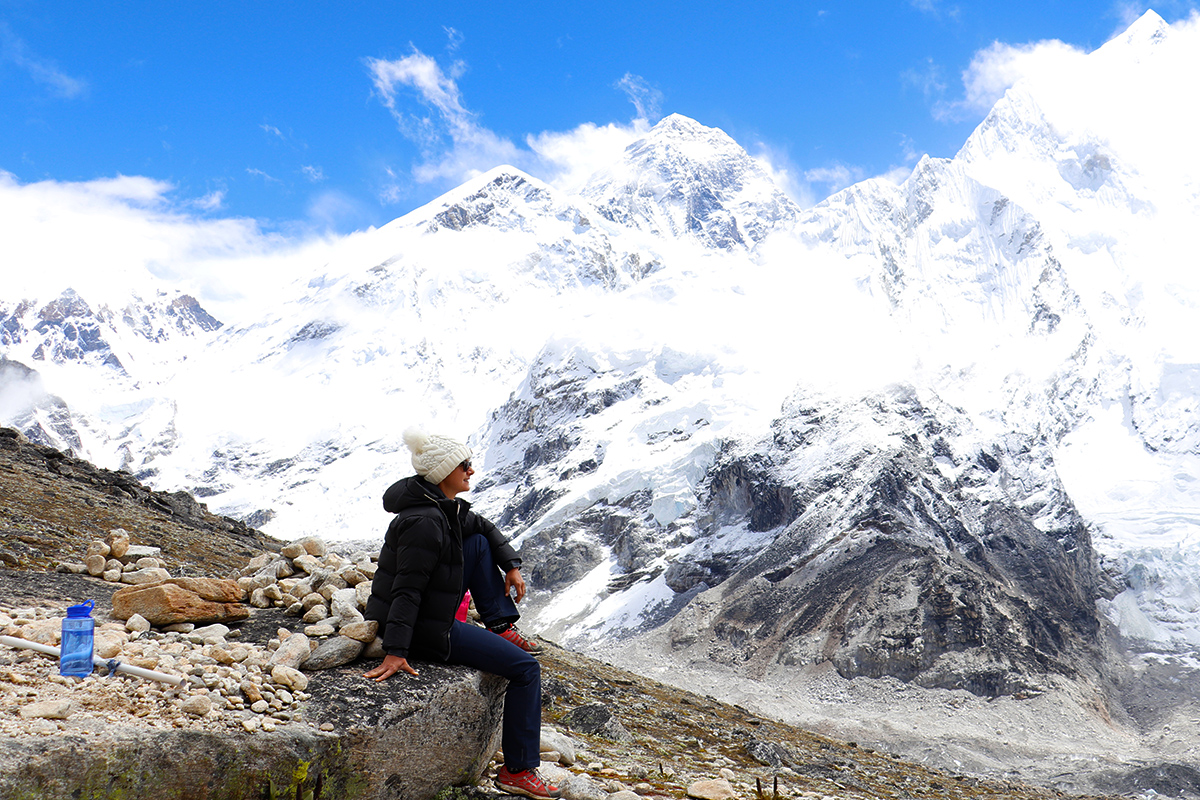
What is the main cause of acute mountain sickness among mountain climbers?
Fast climbs to high elevations without good acclimatization are the major triggers of Acute Mountain Sickness (AMS) in mountain climbers. The chance of developing AMS increases while climbing too quickly because the body is not given enough time to adjust to alterations in oxygen content and air pressure. Bad weather, water loss, harsh physical activity, and prolonged openness to elevated heights are other elements that can contribute to the development of AMS.
What are the symptoms of altitude sickness?
The seriousness of the condition can impact how severe high-altitude sickness symptoms are for someone in particular. These symptoms and indications often include shortness of breath, sickness, vomiting, weakness, and fatigue. It is essential to identify and treat these signs seriously.
